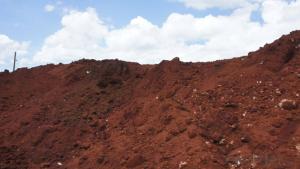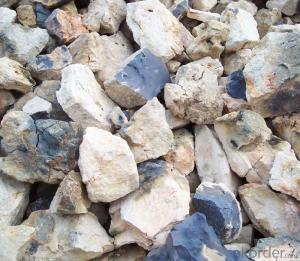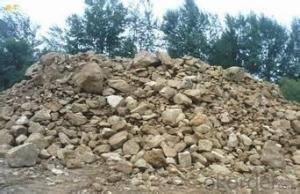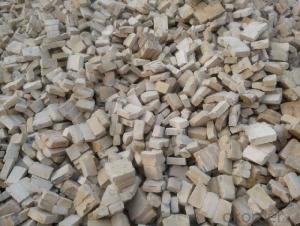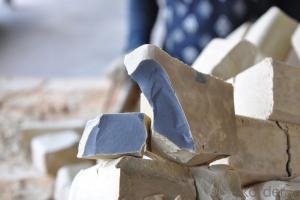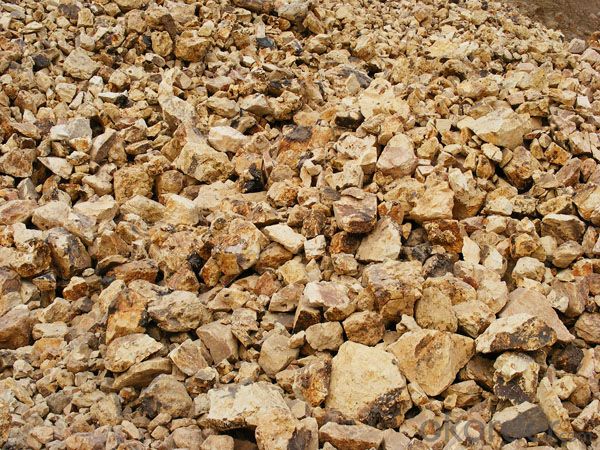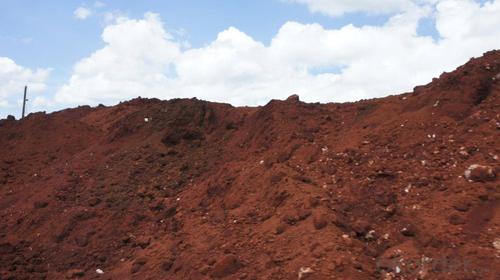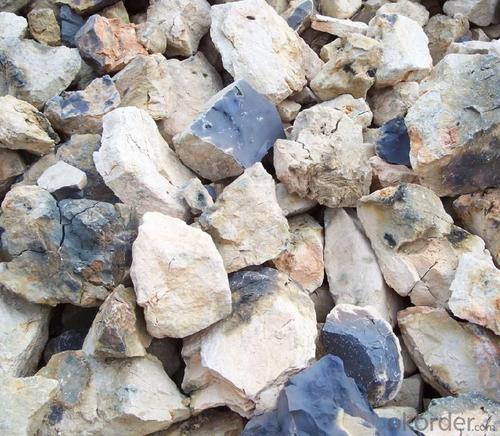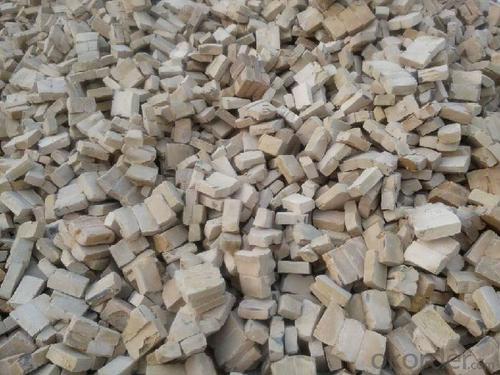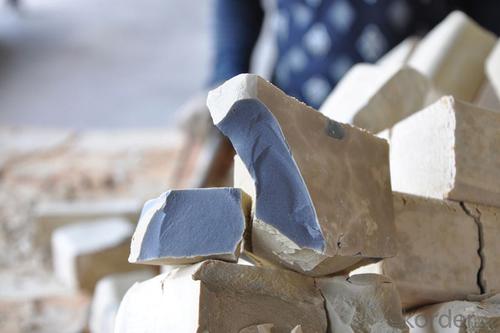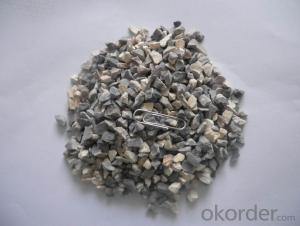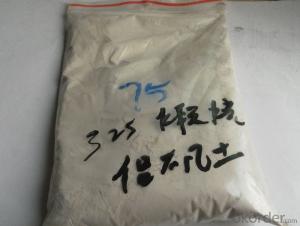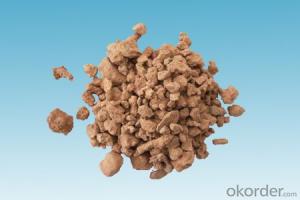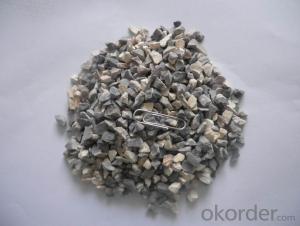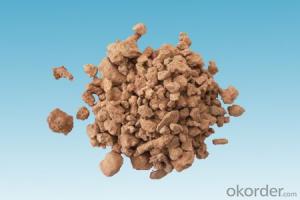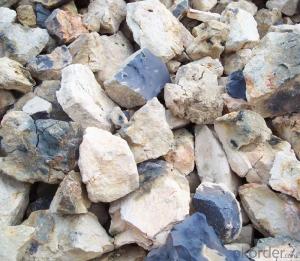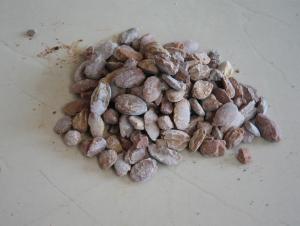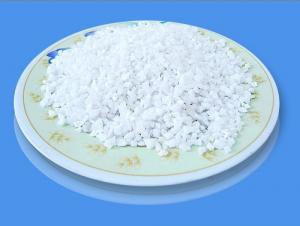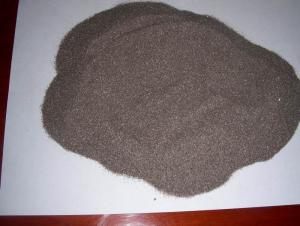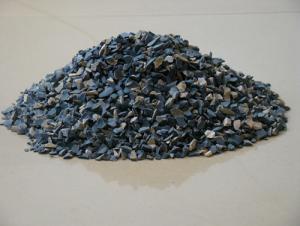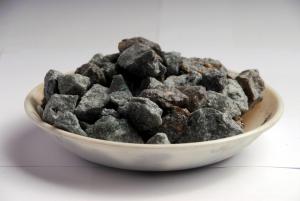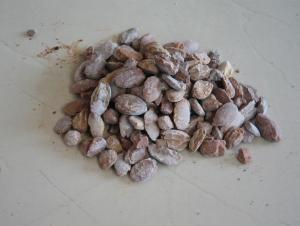Raw Materials for Refractory:Different Sizes and Special Shape Bauxite Fire of CNBM in China
- Loading Port:
- Tianjin
- Payment Terms:
- TT OR LC
- Min Order Qty:
- 16 m.t.
- Supply Capability:
- 10000000 m.t./month
OKorder Service Pledge
OKorder Financial Service
You Might Also Like
Different Sizes and Special Shape Bauxite of CNBM in China
1.Structure of Calcined Bauxite Description
Bauxite (aluminous soil; Bauxite) is also called the alumina or bauxite, main ingredients are alumina, hydrated alumina containing impurities, is an earthy mineral. White or gray, brown and yellow or light red by iron. From 4 to 3.9 g/cm3 density, hardness, 1 ~ 3 is not transparent, very brittle. Very difficult to melt. Insoluble in water, soluble in sulfuric acid, sodium hydroxide solution. Mainly used for aluminium, refractory material.
2.Main Features of the Calcined Bauxite
Calcined bauxite is one of the principal ore of aluminum. Calcined bauxite contains hydrous aluminum oxides and aluminum
hydroxides, formed through the laterization of aluminous rocks in tropical and subtropical areas .Calcined bauxite is obtained by calcining (heating)superior grade bauxite at high temperature (from 85OC to 1600C) .This removes moisture there. By increasing the alumina content,compared to an alumina content of about 57%to 58% in raw bauxite, calcined bauxite has an alumina content of 84%to88%.The heating is carried out in rotary kilns.
3.Main usage of the Calcined Bauxite
(1) aluminium industry. Used in national defense, aerospace, automotive, electronics, chemical industry, daily necessities, etc.
(2) precision casting. Alumina clinker made after the mould precision casting processed into fine powder. Used in military industry, aerospace, communications, instrumentation, machinery and medical equipment department.
4. Calcined Bauxite Images
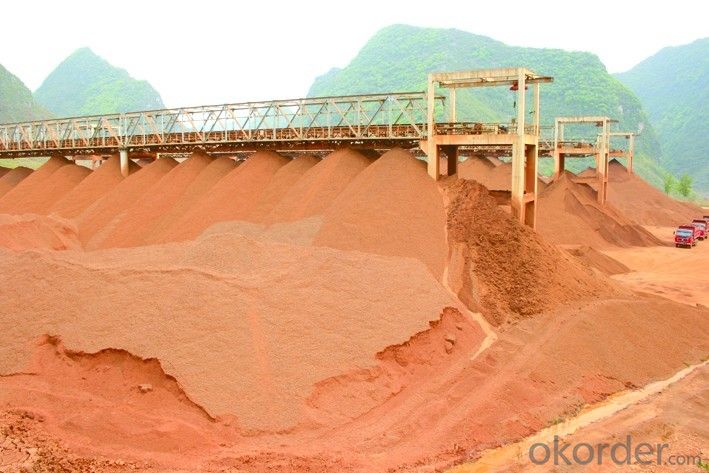
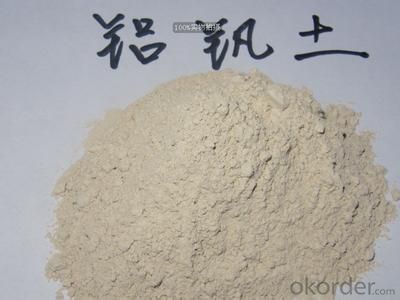
5. Calcined Bauxite Specification
ITEM | SK-32 | SK-34 | SK-36 | SK-38 |
Al2O3(%)Min | 35 | 38 | 48 | 65 |
Fe2O3(%)Max | 3.00-4.00 | 2.50 | 2.00 | 2.00 |
0.2Mpa Refractoriness under load (°C) Min | 1300 |
1350
|
1450
|
1500
|
Apparent porosity(%) | 22-26 | 20-24 | 20-23 | 20-22 |
B.D(g/cm³)Min | 2.05-2.10 | 2.10-2.2 | 2.25-2.35 | 2.40-2.50 |
Cold crushing strength Mpa | 22 | 25 | 45 | 50 |
6.FAQ of Calcined Bauxite
1). Q: Are you a factory or trading company?
A: We are a factory.
2). Q: Where is your factory located? How can I visit there?
A: Our factory is located in ShanXi, HeNan, China. You are warmly welcomed to visit us!
3). Q: How can I get some samples?
A: Please connect me for samples
4). Q: Can the price be cheaper?
A: Of course, you will be offered a good discount for big amount.
- Q: I wanna ask about the building insulation materials fire rating?
- In China, the main external insulation materials are divided into level A, level B1, level B2 and level B3. According to the current "Combustion Performance Classification Method of Building Materials", level A thermal insulation material is incombustible material and inorganic insulation material. However, there are few level A thermal insulation material on the current market, only glass wool, rock wool board, foam glass and vitrified micro bead. However, compared with level A insulation material, the organic insulation materials are popular in the market. Level B insulation material can be divided into three levels, level B1 is flame-retardant, level B2 is flammable, and level B3 is flammable. Level B1 nonflammable thermal insulation material is determined by the fire endurance of the material, in addition, different parts of material is divided differently! More common is EPS / XPS insulation boards which have added flame retardant through special treatment. B2 level of combustible insulation materials, common to EPS expanded polystyrene foam insulation board and XPS board, that is, we often say that the general board. The ignition point of this material is very low, and it will release a large amounts of harmful gases in the combustion process. level B3 flammable insulation material is a kind of thermal insulation material which mainly made of polyphenyl foamed. Since this material is highly flammable, it has been eliminated. Civil construction insulation materials, popular building insulation materials in China's current market are mainly made by three organic foam, such as EPS (molded polystyrene board), XPS (extruded polystyrene board) and PU (polyurethane)
- Q: which kind of material should be used in fireproofing cabinet?
- Natural stone,marble. advantage: Colorful, soft texure, natural and diverse texture, easy to cut or engraving molding. Disadvantages: Because it is a natural formation, tiny loose crackle is easily folded, because the stone is porous material structure, if sewage and waste water permeate in the structure in the process of production, transportation or construction, it's difficult to clean and easy to crack. In daily cleaning, it is inevitable that there will be some residue left, and dirt is filled into crack under the wiping of rag and becomes a breeding ground for bacteria. 2, granite. advantages: Granite has big density and high hardness, with wear-resistant surface, it's one of the most common materials for family decoration. Compared with natural marble, it can be used in the materials of kitchen countertops, and granite has good anti-bacterial regeneration ability. Disadvantages: As the cabinet table material, natural stone is usually not very long, so in order to produce a long overall table (especially U-shaped, L-type table), it will certainly exist joints, which are also easy to hide dirt. 3, artificial stone. advantages: Artificial stone has richful lines and colors, and it can be comparable to stone, it's non-toxic, non-radioactive, easy to clean, and can be truly seamless splicing. it belongs to economic environmentally friendly material. Disadvantages: Artificial stone belongs to the processing industry, and has low technology requirements, The inferior products of many small companys are fulled in the market and damage customers' interests. There exist faded color,poor aging resistance,oil stain and other issues in affordable products.
- Q: What are the physical properties of refractory material?
- The mechanical properties of refractory material include compressive strength, volume density and sclerosing, slag resistance, elastic modulus, thermal shock resistance, oxidation resistance, bibulous rate, fluidity, resilience, bond strength and slump, electrical conductivity, specific heat, heat capacity, the impact strength, linear change, torsional strength, stomatal aperture distribution, resistance to acid, etc. The use performance of refractory material include refractoriness, thermal emissivity, condensation, porosity, coefficient of thermal expansion. Thermal properties of refractory material include thermal conductivity, temperature conductivity, plasticity, the hydration resistance, creep performance. The physical properties of the refractory materials include structure performance, mechanical properties, shear strength, load softening temperature, CO erosion resistance. The structure properties of the refractory materials include porosity, alkali resistance and sintering. The operating performance of refractory material include consistency, tensile strength, the use performance and operating performance, wear resistance, bending strength, thermal properties.
- Q: What's the refractoriness and how to measure the refractoriness?
- Bottom each side length is 8 mm and upper side length is 2 mm. Under a certain temperature-rising speed, when heating, refractory's resistance to high temperature from melting is called refractoriness. The properties of cross section into an equilateral triangle and height is 30 mm. When it bends down until the vertex and chassis contact temperature is the refractoriness of sample. It bends due to the influence of its weight. Make the will-measured material into standard pyrometric cone.
- Q: Does anyone know fire-proof material of fireproof wooden door?
- Fireproof wooden door goes through the flame treatment, so it can prevent fire. Its principle: Fire-retardant treated timber has become flame retardant material itself and its fire endurance has increased. The commonly used method of fire retardant treatment for timber including: Spraying method, soaking method, boiling method, vacuum method, vacuum-pressure method. Spraying method and soaking method are generally used for timber surfaces which are no longer going through planing process, and thin plate fire retardant treatment, whose thickness is less than 10mm .
- Q: Development trend of refractory industry
- China announced that from 2004 January, the export of most refractory raw materials will be cancelled, and the export of finished products will also reduce the tax rebate rate. This means that important raw materials for further export restrictions, some developed countries dependent on imports of China's refractory materials and products of the refractories industry will have a major impact. In order to reduce costs, they will move their factories to Chinese, which is the development of Chinese refractories industry will also be an important opportunity. In addition, the convenience of communication and transportation, the change of the international market and the increase of e-commerce have also brought good opportunities to the development of refractory industry.
- Q: Are refractory materials and fireproofing materials the same?
- The refractory material and fireproofing material are not the same in the strict sense. Refractories refer to non-metallic materials of which refractoriness are higher than 1580 degrees. Now commonly used heat insulation materials can also be considered as refractory materials. The fire endurance of fireproof materials reaches certain requirements. Its test temperature is 540 degrees. Range of applications for two material are not the same. Refractory materials can be used in high-temperature region as it can withstand high temperature. Fireproof materials can not be used under high temperatures for a long time.
- Q: What's the fire endurance of A grade fireproof glass curtain wall?
- The following is fire endurance of A class fireproof glass curtain wall. Fire endurance of the fire window: A class fire window: no less than 1.2h; B class fire window: no less than 0.9h; C class fire window: no less than 0.6h. Technical requirements: 1. Materials and fittings: (1) Window frame should adopt the steel frame or wood frame with certain strength so as to guarantee the integrality and stability of the fitting; (2) Steel frame and mound layer can choose the galvanized steel sheet or stainless steel sheet. Its selection standard is in line with provisions of Article 5.1 in GB12955 "General Technical Requirements on Steel Fire Doors"; (3) Selection standard of wood frame and mound layer should be consistent with the provisions of Article 5.1.1 in GB14101 "General Technical Requirements on Wood Fire Doors"; (4) Filler material inside the steel frame and wood frame should be incombustible material; (5) Fireproof glass can choose the qualified product with no influence on the fire resistance test of the fire window, and its light transmittance should be no less than 75% of that of the ordinary sheet glass with the same layers; (6) Sealing material between the frame and the fireproof glass should use flame retardant material which can play the role of fire prevention and smoke insulation in case of fire. Hope it's helpful for you.
Send your message to us
Raw Materials for Refractory:Different Sizes and Special Shape Bauxite Fire of CNBM in China
- Loading Port:
- Tianjin
- Payment Terms:
- TT OR LC
- Min Order Qty:
- 16 m.t.
- Supply Capability:
- 10000000 m.t./month
OKorder Service Pledge
OKorder Financial Service
Similar products
Hot products
Hot Searches
Related keywords

